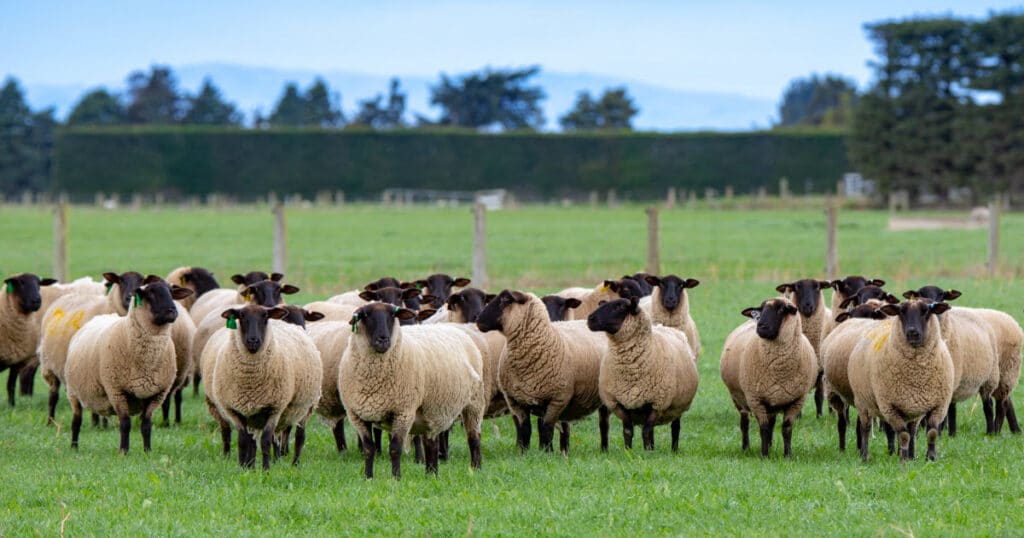Suffolk sheep can be found around the world and are a popular choice in countries which value commercial sheep production. The Suffolk sheep breed is perhaps the most commonly used purebred sheep breed in the United States and are a frequent choice for commercial shepherds as terminal sires in crossbreeding programs.
History of the Suffolk Sheep Breed
This breed was introduced to the U.S. in 1888, but it originated in England as a product of crossing Norfolk and Southdown sheep.
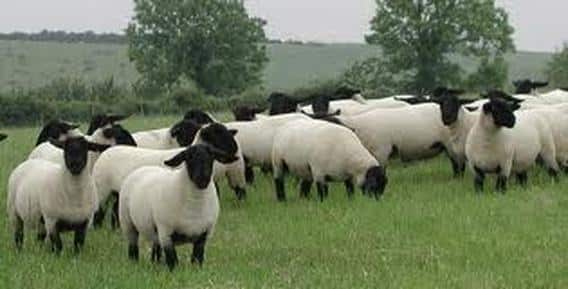
Suffolk sheep are the largest breed found in the United States. They are renowned for their rapid rate of growth.
What do Suffolk Sheep Look Like?
You can distinguish Suffolks from other large meat breeds because they have bare legs and heads (as opposed to Hampshires, which have wool on top of their head and down their legs with coarser black hair fibers).
Breed Standard
Suffolk sheep have several characteristics that make it unique. One of these is their ears, which are bell-shaped, and often hang pointed downward.
This is a strong and muscular sheep breed. Even the ewes are well-muscled. They aren’t as muscular as the rams, however, and the latter have much larger body mass and volume than females do.
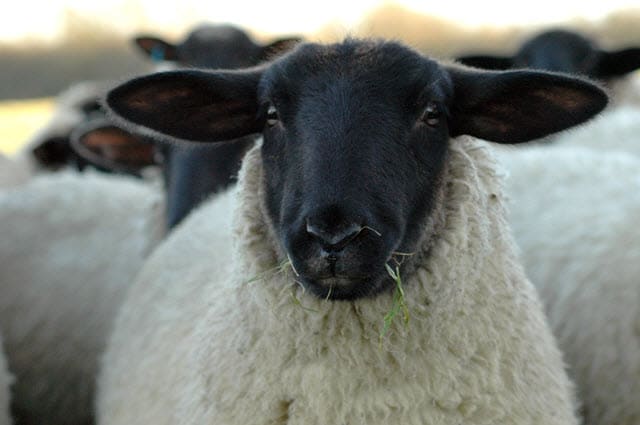
This sheep breed doesn’t have any wool on its head, which is jet black. The Suffolk’s wool is white, and its skin is pink. While the Suffolk shouldn’t be excessively refined, it should not be coarse either. This is true for both ewes and rams.
One distinct advantage of the Suffolk for farmers is how quickly the lambs grow.
Face and Head
Black hair with a fine texture covers the Suffolk sheep’s head. There isn’t any wool on the head, both at the cheeks and poll. When you look at this sheep’s head, you notice it has an oblong shape. The Suffolk breed standard discriminates against sheep considered excessively coarse-headed or too refined. This will vary by whether the sheep is a ram or ewe.
The Suffolk sheep has a wide muzzle and strong jaw. These features indicate the breed’s foraging capabilities. When breeding Suffolk sheep, you should select against ears that are covered with wool. Ears should not stand upright, or be perpendicular or short. Also stay away from animals that have a head and/or ears that are any other color than black.
Legs and Feet
The Suffolk sheep has a wide appearance when you see it from behind. The animal should have a long stride, and it should be graceful and confident. The sheep’s toes should be consistent in size, and the heel should be deep-set. The Suffolk sheep has jet black hooves. The legs should not be excessively coarse nor refined in terms of bone size.
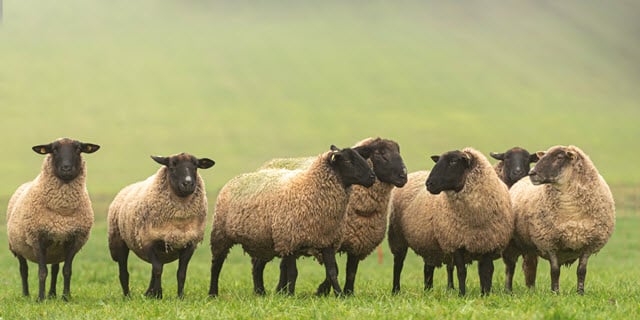
The Suffolk’s legs and feet feature fine black hair that reaches from ground level to the hock and knee. There isn’t any wool on the feet and legs, which have moderate length. The Suffolk sheep has an athletic gait. If you are a Suffolk breeder, you should select against features such as toes that have wide splaying, post legs, bowed hocks or knees, sickle hocks, coarse or weak joins, and cow hocks.
Hindquarter
The Suffolk sheep’s hindquarters should have outstanding muscle volume and shape. This sheep breed should also have long bodies, including in the hindquarter. High-quality Suffolk sheep should have wide and long loins, with seamless blending into the top body.
When you look at a Suffolk, the body should get wider moving from its front body to the rear. The characteristics you should select against when breeding Suffolks include narrow rump areas, weak top bodies, weak muscle development, high-positioned flanks, flat muscling, and shallow loins. When you look at the Suffolk sheep’s legs, you should notice exceptional characteristics when it comes to volume and twist in the outer and inner leg.
Forequarter
A Suffolk should have a moderately long neck that sets into the body smoothly. The neck should seamlessly attach to the shoulder. The shoulder should not be coarse, and it ought to obliquely attach to the rest of the body. There is exceptional muscling on the forearm and shoulder.
The rack begins narrower but then widens into a topline with superior muscling. This connects seamlessly to the loin. The Suffolk’s chest is one of the breed’s best signals of vigor, as its markedly wide and deep. Capacity is signaled with the deep and open ribs.
Why Raise Suffolk Sheep?
Suffolk rams are commonly used as a sire in crossbreeding programs as they imbue their lambs with lean, high-yield carcasses and a rapid rate of growth.
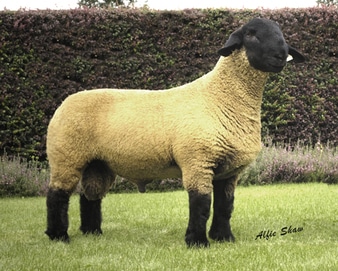
Suffolk ewes have a strong maternal instinct and produce plenty of milk.
Farmers select for Suffolk sheep which are able to thrive in a variety of climates and while their wool is not a primary concern, they do produce fleece that is of medium grade.
Suffolk sheep carcasses are easy to cut and are often popular among diners who enjoy lean lamb.
Suffolk Breed Information
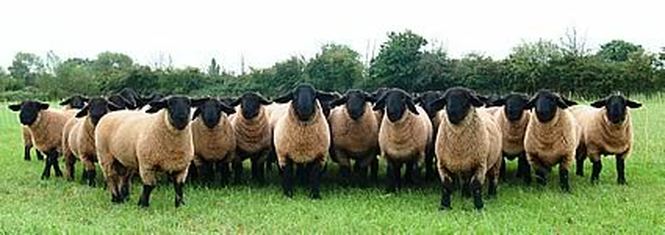
| Mature Body Weight | Ram: 275 – 400 pounds Ewe: 200 – 300 pounds |
| Average Fiber Diameter | Micron: 26 – 33 USDA Wool Grade: 46’s – 58’s |
| Grease Fleece Weight | 4 – 8 pounds |
| Fleece Staple Length | 2.5 – 3.5 inches |
Visit the United Suffolk Sheep Association website for more information or to find a Suffolk breeder near you.

